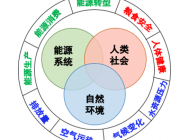Citation:
Qin Y, Hong CP, Zhao HY, Siebert S, Abatzoglou JT, Huning LS, Sloat LL, Park S, Li S, Munroe DK, et al. Snowmelt Risk Telecouplings for Irrigated Agriculture. Nature Climate Change. [Internet]. 2022;12(11):1007–1015.
摘要:
Climate change is altering the timing and magnitude of snowmelt, which may either directly, or indirectly via global trade, affect agriculture and livelihoods dependent on snowmelt. Here we integrate sub-annual irrigation and snowmelt dynamics and a model of international trade to assess the global redistribution of snowmelt dependencies and risks under climate change. We estimate that 16% of snowmelt used for irrigation is for agricultural products traded globally, of which over 70% is from five countries. Globally, we observe a prodigious snowmelt dependence and risk diffusion, with particularly evident importing of products at-risk in western Europe. In Germany and U.K, respective local fraction of surface-water-irrigated agriculture supply exposed to snowmelt risks could increase from negligible to 16% and 10% under a 2°C warming. Our results reveal the trade-exposure of agricultural supplies, highlighting regions and crops whose consumption may be vulnerable to changing snowmelt even if their domestic production is not.附注:
Media Coverage: 北大科研;环境人Environmentor; 地学新文献;北京大学环境科学与工程学院
